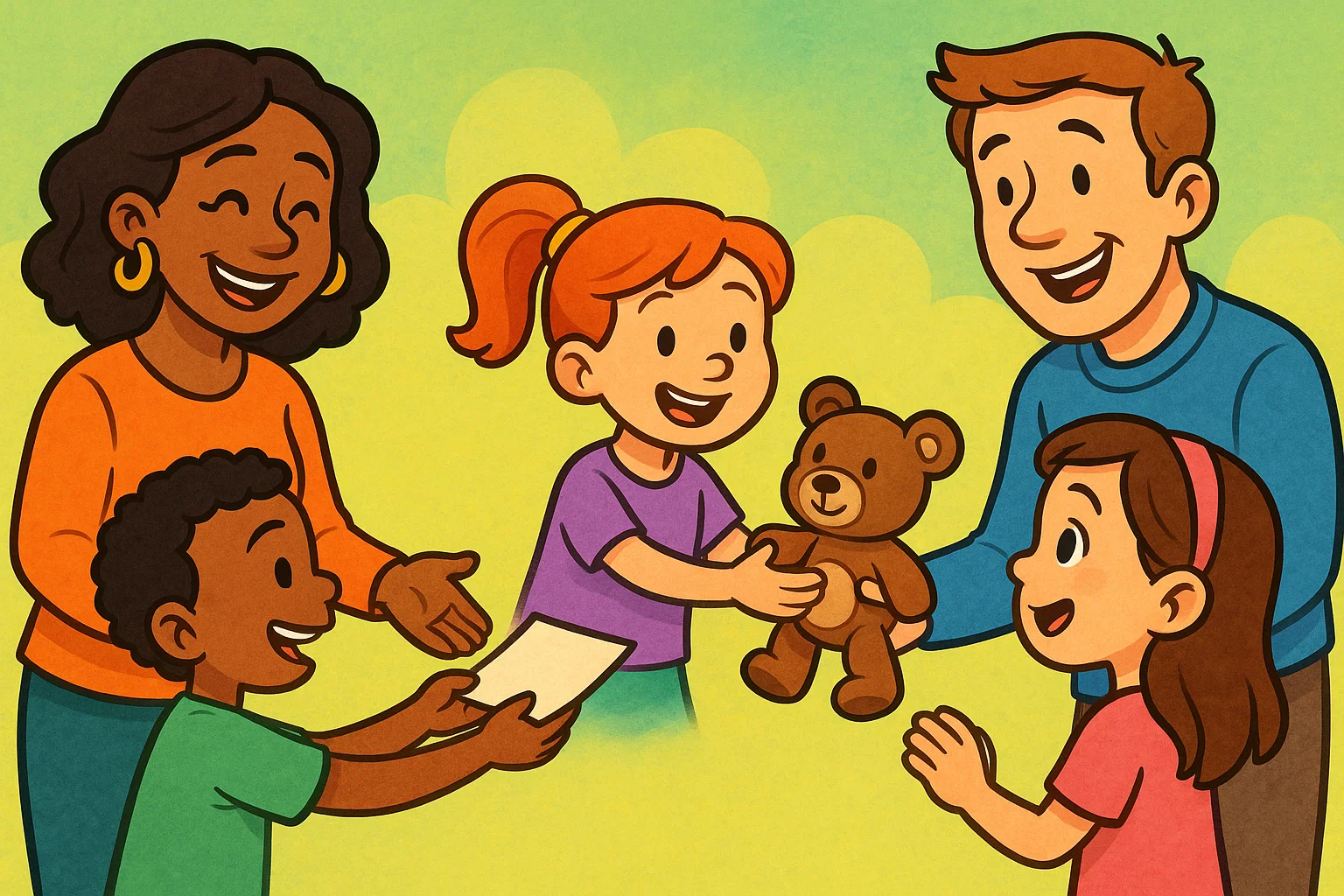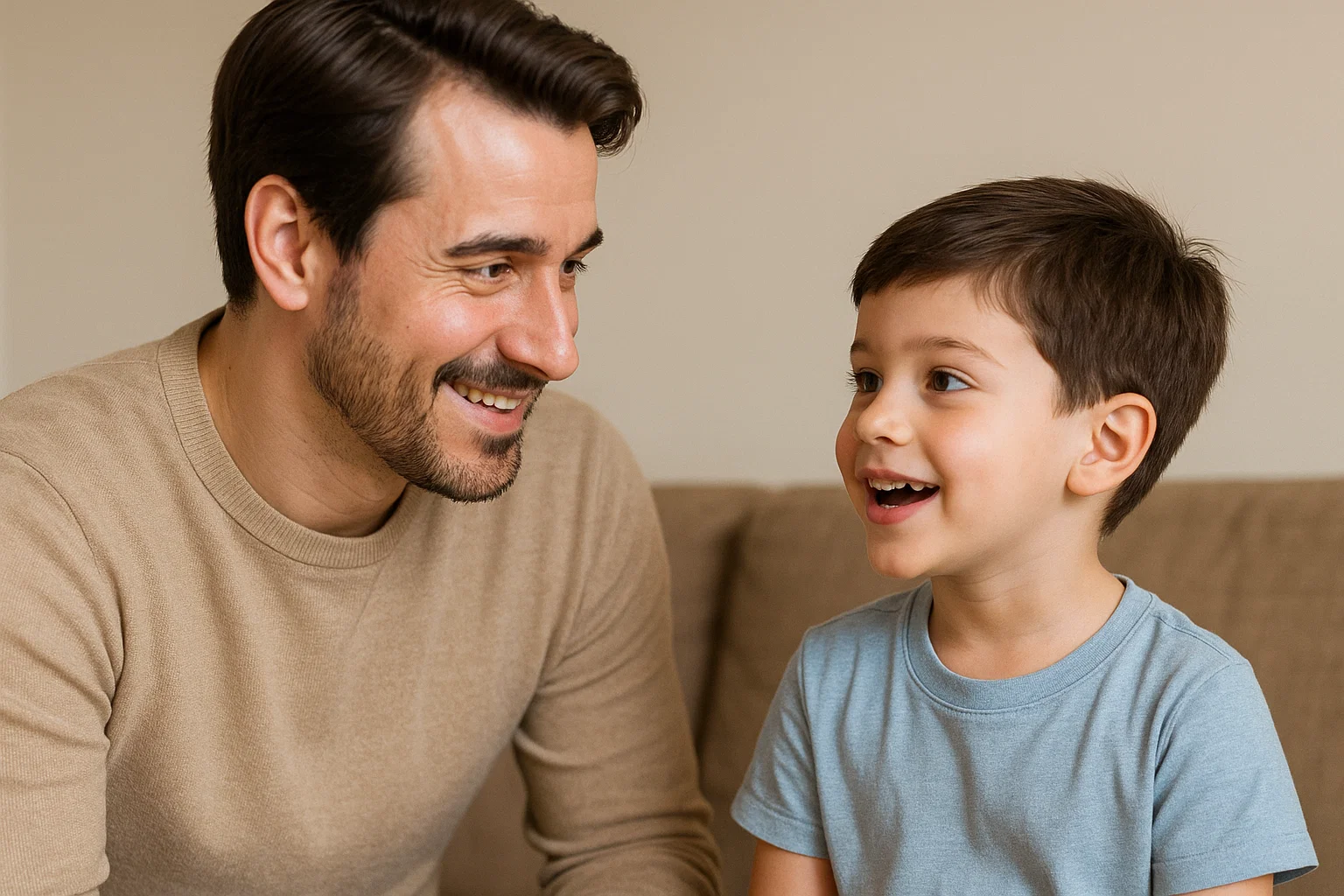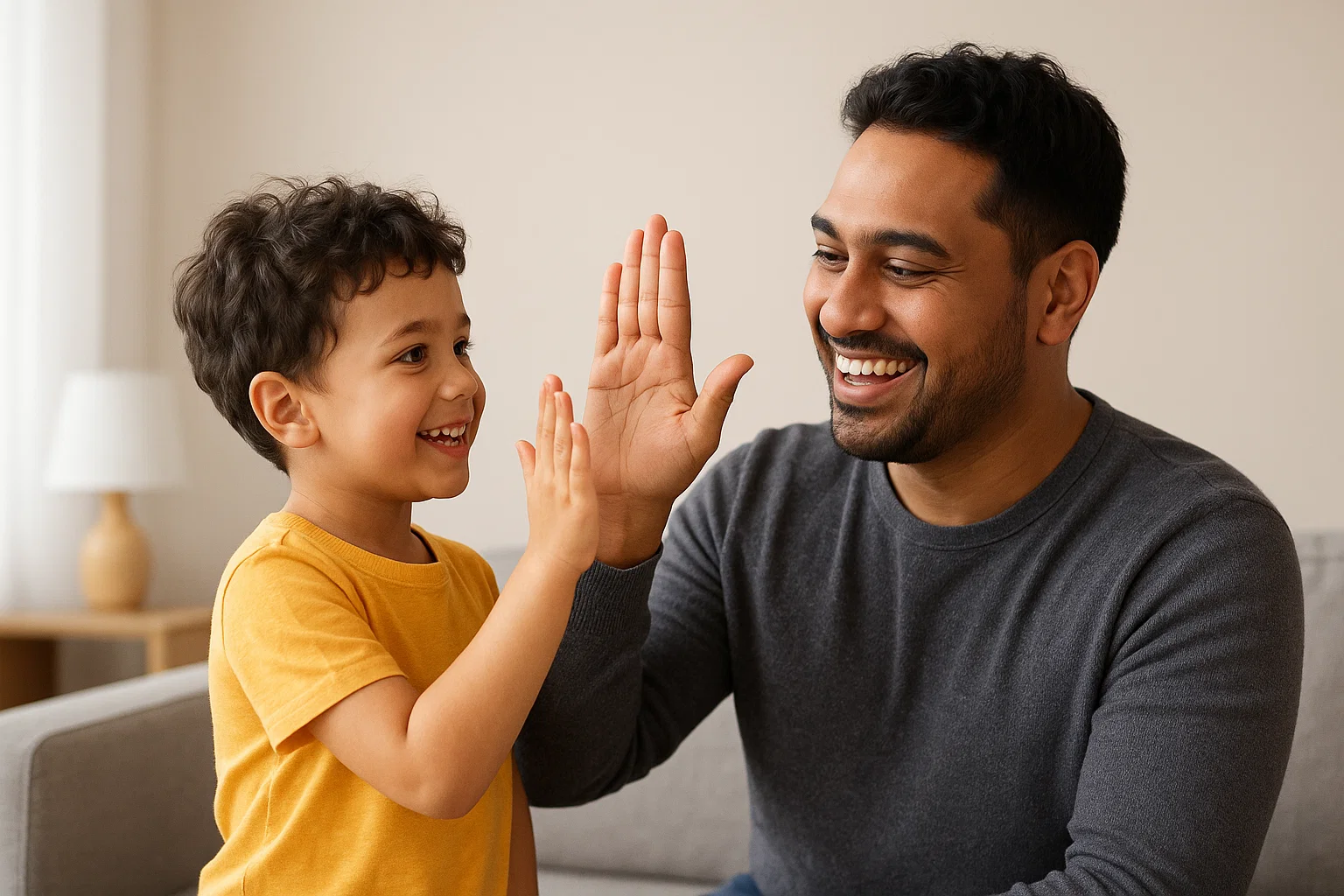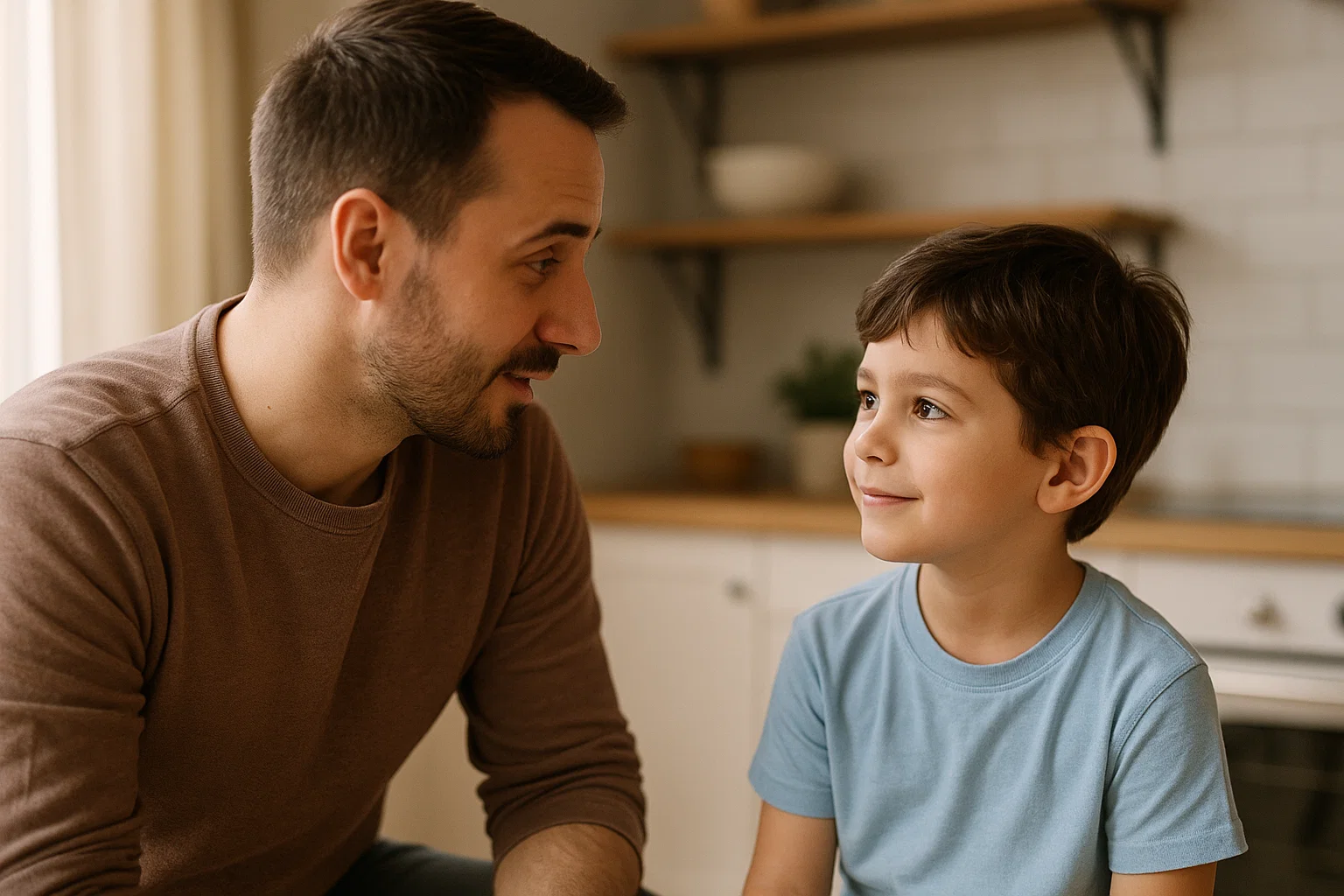Teaching Children Respect: How to get your child to listen and respect you

Teaching children respect forms the foundation of healthy relationships and successful social interactions throughout their lives. As parents, you play a crucial role in helping your child develop this essential skill that extends far beyond simple politeness.
Respect encompasses treating others with kindness, consideration, and dignity while also maintaining healthy boundaries for yourself. When you teach kids respect, you’re not just addressing surface-level manners—you’re building empathy, communication skills, and emotional intelligence that will serve them well into adulthood.
Model Respectful Behavior

Children learn primarily through observation, making your own behavior the most powerful teaching tool available. The concept of respect becomes tangible when kids witness it in action through your daily interactions.
Act with Kindness and Courtesy
Your words and actions serve as a blueprint for how your child will treat others. When you consistently demonstrate kindness in your interactions—whether with family members, store clerks, or neighbors—you’re showing your child that respectful behavior is a way of life, not just a rule to follow.
Daily ways to model kindness:
- Hold doors open for others
- Say “please,” “thank you,” and “excuse me” consistently
- Speak positively about others, even when they’re not present
- Offer help to family members without being asked
- Show patience in frustrating situations
Consider how you handle frustrating situations. If you remain calm and courteous when dealing with a difficult customer service representative, your child observes that respect doesn’t disappear when things get challenging. Making eye contact, using “please” and “thank you,” and maintaining a respectful tone of voice all contribute to modeling the behavior you want to see.
Practice Active Listening
Active listening demonstrates respect by showing others that their thoughts and feelings matter. When your child speaks to you, put down your phone, make eye contact, and give them your full attention. This teaches them that actively listening to others is a fundamental way to show respect. By summarizing what your child has said and asking clarifying questions, you model how to engage respectfully in conversations.
Show Empathy in Daily Interactions
Empathy and respect work hand in hand. When you acknowledge others’ feelings and perspectives, you demonstrate that every person deserves consideration. Point out when someone might be having a difficult day, and discuss how small acts of kindness can make a difference.
For example, if you notice a tired cashier at the grocery store, you might say, “She looks like she’s had a long day. Let’s make sure to be extra patient and kind.” This helps your child understand that respect involves considering others’ experiences and emotions.
Be Accountable for Actions
Taking responsibility for mistakes teaches children that respect includes acknowledging when we’ve done something wrong. When you make an error, admit it openly and discuss how you plan to make things right. This demonstrates that respectful people own their actions and work to repair any harm they may have caused.
Many parents find it challenging to admit mistakes to their children, but this vulnerability actually strengthens your authority while teaching valuable lessons about integrity and respect.
Use Polite Language
The language you use throughout the day shapes your child’s understanding of respectful communication. Avoid harsh criticism, name-calling, or dismissive language, even when frustrated. Instead, model how to express disagreement or disappointment respectfully.
When correcting your child’s behavior, focus on the specific action rather than attacking their character. Say “That behavior was disrespectful” rather than “You’re being disrespectful.” This distinction helps children understand that they are fundamentally good people who sometimes make poor choices.
Set Clear Expectations for Behavior

Setting clear expectations helps children understand what respectful behavior looks like in practice. Without clear boundaries and definitions, children may struggle to meet your expectations simply because they don’t understand what you’re asking for.
Define Respect for Kids
Young children often struggle with abstract concepts, so it’s important to explain what respect means in concrete terms. You might say, “Respect means treating others the way you want to be treated” or “Respect is using kind words and gentle hands with other people.”
Simple ways to explain respect to children:
- Treating others how you want to be treated
- Using kind words and gentle actions
- Listening when others speak
- Being helpful and considerate
- Taking care of things that belong to others
Create specific examples that relate to your child’s daily experiences. For instance, respect at home might mean waiting your turn to speak, helping with chores without complaining, or using indoor voices. At school, respect might involve listening to teachers, sharing materials, and including others in games.
Establish Household Rules
Clear, consistent household rules provide structure and help children understand behavioral expectations. These rules should be simple, age-appropriate, and focused on respectful interactions rather than arbitrary restrictions.
| Age Group | Example Respectful Rules |
| 3-5 years | Use gentle touches, say “please” and “thank you,” listen when others speak |
| 6-8 years | Knock before entering rooms, help family members when asked, use respectful language |
| 9-12 years | Respect others’ belongings, participate in family discussions politely, show consideration for siblings |
Discuss Limits Calmly
When explaining behavioral limits, maintain a calm, matter-of-fact tone. Discuss why certain behaviors are disrespectful and how they affect others. This approach helps children understand the reasoning behind rules rather than simply following them out of fear.
For example, if your child interrupts conversations, you might explain, “When you interrupt, it shows that you think your words are more important than theirs. We need to wait for our turn to speak so everyone feels heard and respected.”
Clarify Social Interaction Skills
Social situations can be confusing for children, so it’s important to teach specific skills for different contexts. Discuss how respect looks different at home versus school versus public places, while maintaining the same underlying principles.
Essential social interaction skills to teach:
- Greeting people appropriately
- Making eye contact during conversations
- Taking turns in discussions
- Apologizing when you make mistakes
- Asking permission before using others’ belongings
- Showing appreciation for help received
Role-playing various social scenarios can help children practice respectful behavior in a safe environment. Practice greeting adults, handling disagreements with friends, and showing respect to authority figures like teachers or coaches.
Reinforce Respectful Actions 🌟

Positive reinforcement strengthens respectful behavior by helping children understand when they’ve made good choices. The key is to be specific about what behaviors you’re praising and why they matter.
Praise Specific Behaviors
Rather than offering general praise like “good job,” focus on specific respectful actions. Say “I noticed how you waited patiently for your sister to finish talking before sharing your idea. That showed great respect for her feelings.”
This specificity helps children understand exactly what they did well and makes it more likely they’ll repeat the behavior. Research suggests that specific praise is more effective than general praise in shaping long-term behavior patterns.
Positive Reinforcement in Action
Create opportunities for your child to practice respectful behavior and acknowledge their efforts. This might involve giving them chances to help others, solve problems collaboratively, or demonstrate good manners in social situations.
Ways to reinforce respectful behavior:
- Verbal praise for specific actions
- Special privileges for consistent respectful behavior
- Family recognition systems
- Celebrating progress, not just perfection
- Sharing positive observations with other family members
Consider implementing a family recognition system where family members can acknowledge each other’s respectful actions. This creates a culture of mutual respect and helps children notice and appreciate respectful behavior in others.
Celebrate Diversity
Teaching respect includes helping children appreciate differences in others. When you encounter people from different backgrounds, cultures, or abilities, use these as teachable moments to discuss how respect means treating everyone with dignity regardless of their differences.
Books, movies, and community events can provide natural opportunities to discuss diversity and respect. Help your child understand that respectful behavior means being kind to everyone, not just people who look or act like them.
Role-Play Scenarios
Practice makes perfect when it comes to respectful behavior. Create scenarios where your child can practice responding respectfully to challenging situations. This might include dealing with a friend who won’t share, responding to teasing, or handling disappointment gracefully.
Role-playing helps children develop problem-solving skills and gives them confidence to handle difficult situations respectfully. Start with simple scenarios and gradually increase complexity as your child’s skills develop.
Address Disrespect Promptly ⚠️
When disrespectful behavior occurs, addressing it quickly and consistently helps children understand that respect is non-negotiable. The goal is to teach and redirect rather than simply punish.
Confront Early and Often
Don’t let disrespectful behavior slide, even if it seems minor. Small acts of disrespect can escalate if left unchecked, and children may interpret your silence as approval. Address issues immediately while they’re still manageable.
Common disrespectful behaviors to address immediately:
- Interrupting conversations
- Using rude or dismissive language
- Ignoring when spoken to
- Taking things without permission
- Rolling eyes or making faces
- Refusing to help with reasonable requests
When your child displays disrespectful behavior, calmly state what you observed and explain why it’s problematic. Give them a chance to correct the behavior and practice a more respectful response.
Discuss Behavior When Calm
While it’s important to address disrespect immediately, deeper conversations about behavior should happen when both you and your child are calm. This allows for more productive discussions about choices, consequences, and better alternatives.
During these conversations, help your child understand how their behavior affected others and brainstorm more respectful ways to handle similar situations in the future. This problem-solving approach teaches valuable life skills beyond just following rules.
Avoid Overreacting
Disrespectful behavior can trigger strong emotions in parents, but overreacting often escalates the situation and models the very behavior you’re trying to discourage. Take a deep breath and respond with the same respect you expect from your child.
If you find yourself getting angry, it’s okay to take a brief break before addressing the behavior. Say something like, “I need a moment to collect my thoughts, and then we’ll talk about what just happened.”
Set Boundaries During Disagreements
Disagreements are natural, but they should be handled respectfully. Teach your child that it’s okay to have different opinions, but it’s not okay to be mean, dismissive, or hurtful when expressing those opinions.
Establish clear boundaries for how disagreements will be handled in your family. This might include rules about tone of voice, listening to each other’s perspectives, and working together to find solutions.
Promote Active Listening Skills 👂

Active listening is a cornerstone of respectful communication. When children learn to truly hear and understand others, they develop empathy and build stronger relationships.
Practice Asking Clarifying Questions
Teach your child to ask questions that help them better understand what others are saying. This might include questions like “Can you tell me more about that?” or “How did that make you feel?”
Examples of clarifying questions for children:
- “What do you mean when you say…?”
- “Can you give me an example?”
- “How did that make you feel?”
- “What would you like me to do to help?”
- “Is there anything else you want to tell me?”
Model this behavior by asking your child clarifying questions about their experiences. This shows them that you value their thoughts and feelings while teaching them how to engage respectfully with others.
Summarize What Was Heard
Help your child practice summarizing what they’ve heard before responding. This skill ensures they truly understand what others are saying and shows the speaker that their words matter.
Start with simple exercises during family conversations. Ask your child to repeat back what their sibling just said before sharing their own thoughts. This practice helps prevent misunderstandings and promotes more respectful communication.
Self-Respect and Personal Boundaries
Teaching children to respect themselves is just as important as teaching them to respect others. Self-respect forms the foundation for healthy relationships and confident decision-making.
Teach Self-Worth
Help your child understand that they have inherent value and deserve to be treated with kindness and respect. This doesn’t mean they’re better than others, but that they’re worthy of care and consideration.
Ways to build self-respect in children:
- Acknowledge their feelings and experiences
- Celebrate their unique qualities and talents
- Teach them to speak positively about themselves
- Help them set and achieve personal goals
- Show them that mistakes are opportunities to learn
Discuss how self-respect influences the choices we make. When children value themselves, they’re more likely to make decisions that align with their values and less likely to accept disrespectful treatment from others.
Set Personal Boundaries
Teach your child that it’s okay to say no to requests that make them uncomfortable, even from adults or friends. This skill helps them protect themselves while also understanding that others have the right to set boundaries too.
Practice scenarios where your child might need to assert boundaries, such as not wanting to be hugged by a relative or declining to participate in an activity that doesn’t feel right to them.
Connect Self-Respect to Respect for Others
Help your child understand that self-respect and respect for others are interconnected. When we value ourselves, we’re more likely to treat others well, and when we treat others with respect, we reinforce our own sense of dignity.
Discuss how the golden rule—treating others as you would want to be treated—applies to various situations. This timeless principle helps children understand that respect is a two-way street.
Common Questions on Teaching Kids Respect
At what age should I start teaching respect?
You can begin teaching respect from toddlerhood by modeling respectful behavior and using simple language to explain basic concepts. Even very young children can learn to say “please” and “thank you” and practice gentle touches.
What if my child is disrespectful despite my best efforts?
Consistency is key. Continue modeling respectful behavior, set clear consequences for disrespect, and consider whether your child might be struggling with underlying issues like stress, developmental challenges, or emotional difficulties that need additional support.
How do I teach respect without being too strict?
Respectful parenting involves being firm about boundaries while remaining kind and understanding. You can maintain high expectations for behavior while also showing empathy for your child’s feelings and developmental stage.
Should I expect perfect respectful behavior all the time?
No child will be perfectly respectful all the time. The goal is progress, not perfection. Focus on overall patterns of behavior and celebrate improvements while continuing to address areas that need work.
How do I handle it when my child is disrespectful to other adults?
Address the behavior immediately and privately when possible. Apologize to the other adult if necessary, and discuss with your child why the behavior was inappropriate. Follow up with consequences and practice more respectful responses.
